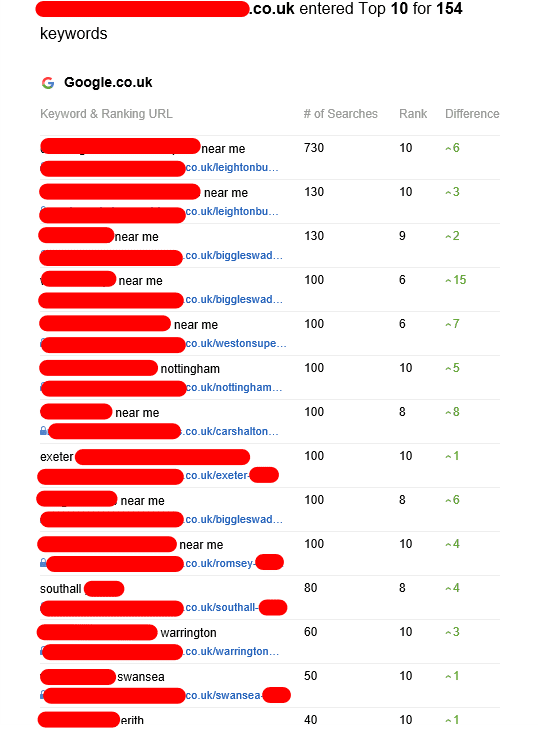Backlink Tier - The Hierarchy of Backlinks That Scale Your SEO Campaign
Backlink tier is the hierarchy of links that you create in order to expand your SEO campaign. Each level gives you an extra layer of protection against Google's penalties.
Tiered link building requires considerable time and effort to get things right. Google takes weeks to discover and assess new backlinks.
First-Tier Links
These links must be of a high standard and dofollow links from reputable websites. These links are referred to as Tier 1 backlinks, and they form the basis of your link-building strategy. They give your website enough domain authority to rank well on the search engine result pages. If, for example, your blog post was published on HubSpot and also included a tier-one hyperlink to SearchEngineLand's compilation Link Building Statistics then SearchEngineLand’s web rankings will benefit from the link equity that HubSpot gave away.
The second tier can be a bit more varied and can contain low-quality sites, like spammy forum posts or low-quality bookmarking websites and directories. Tier 2's main goal is to create high-quality content that links back to your first-tier backlinks. This is because quality content will enhance the article it is placed within, and not make it appear as a separate item to SEO purposes.
In order to build an effective tiered link building campaign you will need to invest in the creation of quality content and utilizing tools like RankerX or GSA. However the time and expense that is spent manually executing the tiered link building process could be worth it in terms of the increased ranking benefits that come from having a well-structured backlink pyramid.
Second-Tier Links
Tiered link building is designed to funnel users through different pages before they reach your website. In order to achieve this, it's important to choose second-tier backlink sources that are relevant to your industry and site. Contrary to profile profiles and guest blog posts, guest blog posts work very well for this function because they provide useful content that users want to consume.
In general, avoid using tier 2 links on forums or on other low-quality websites. Instead, use high-quality pages of articles from industry or guest posts. These links will be more natural and will have greater impact on your search engine ranking. They're also more likely to be recognized as having earned link equity by Google, which can increase the value of their position in SERPs.
If you're planning to create tier 2 links in the hopes of increasing your SEO rankings You must be aware of the difficulty to acquire these types of high-quality backlinks on your own. It could take a few months to pitch guest posts to top-tier publishers, and even longer them to be published. It could take weeks to see the results when it comes time to create new traffic and converts from onsite.

Many SEOs employ automated tools to create second-tier backlinks. However, this approach could be in violation of Google's Webmaster guidelines and could result in an infringement.
Third-Tier Links
This level is home to a huge amount of links, many of which are borderline spammy. They are posted on social media platforms and user-generated content sites like Quora. They aid in the indexing of tier two links but don't pass any link equity to the resource promoted. They are typically nofollow links. At this point marketers are more focused on quantity than quality. They use tools to post numerous links in forums, in comments sections of articles and blog posts, in directories, and other similar places. In this scenario, tiered link-building becomes a gray zone that is in violation of Google's webmaster guidelines.
Link-building campaigns that are classified require a lot of energy and time to be successful. Google may take months or even days to rank the backlink. It can take weeks or months for an SEO impact to be evident. Marketers must be patient and use a carefully-planned content strategy.
Additionally marketers should stay clear of using excessive automation tools for this kind of linking. They can be in violation of the rules of search engine optimization and lead to penalties. It is preferential to select the links manually and publish them on relevant websites of donors instead of using automated tools such as GSA or RankerX. This will stop the search engine from penalizing the promotion with links that aren't of good quality.
Fourth-Tier Links
Tiered link building is still a popular method for improving web page rankings. Since Google has been making significant efforts to eradicate "black-hat" SEO techniques, tiered link building techniques have been affected.
This is because they are now considered to be gray-hat in the SEO world, and may be penalized if they are used in a manipulative manner. Tiered links are backlinks that are constructed based on different levels of the link pyramid. These backlinks are primarily used to increase a resource's rank in search results. This means that the promoted web page will be more prominent than its rivals and gain more organic traffic.
The quality of the backlinks within this tier is a step down and are usually nofollow. This tier can also comprise low-quality directories, article networks, and social media profiles. These links can be built organically or through strategies for automation. However they must be diverse in terms of niches, domains and relevance.
These backlinks, as well as being low-quality and not followable, can also cause issues when they're not sufficiently diversified. This is because Google has a very advanced group of hound dogs who are constantly on the lookout for patterns in backlink profiles and strategies. If these are discovered, it can lead to a penalty not only for the team responsible for building links, but also for its clients.
